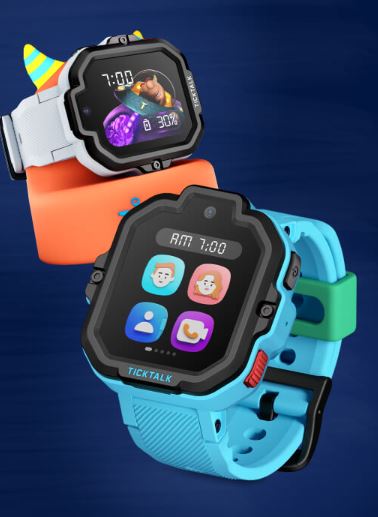Smartwatches for Kids: A Practical Buying Guide for Parents

Smartwatches for Kids: A Practical Buying Guide for Parents
Kids' smartwatches can be brilliant little helpers—keeping children connected, active, and safer—without handing them a full smartphone. But the market is crowded and specs can be confusing. Here's a clear, no-nonsense guide to choosing the right children's smartwatch (and avoiding costly mistakes).
1) Start with Your Goal
Decide what you actually need the watch to do:
Safety & location: SOS button, GPS, geofencing alerts, safe contacts.
Communication: Voice calls, video calls, texts/voice messages.
Activity & wellness: Step counting, movement reminders, basic sleep tracking.
Learning & fun: Simple games, camera, chores/reward charts.
Digital boundaries: School mode, parental controls, app approvals.
Your top 2–3 goals should drive the rest of your choices.
2) Core Features to Compare
Location & Safety
GPS accuracy: Look for A-GPS + cellular + Wi-Fi positioning for better accuracy indoors and in cities.
Geofencing: Customizable safe zones with instant alerts when a child enters/leaves.
SOS shortcut: One long-press that calls primary contacts and shares location.
Whitelisted contacts: Only approved numbers can call/message the watch.
Communication
Calling: Check if it supports 4G/LTE (faster, better coverage). Some models use VoLTE only.
Video calling: Great for quick face checks, but drains battery faster.
Messaging: Voice messages are easier for younger kids who can't type yet.
Battery Life
Expect 1–3 days depending on GPS/calling use. Bigger batteries help, but software matters more.
Magnetic charging is easiest. Avoid proprietary cables you can't replace.
Durability & Comfort
Water resistance: Aim for IP67/IP68 (splash- to swim-safe—read the fine print).
Rugged build: Shock-resistant casing, Gorilla Glass, raised bezels.
Fit & weight: Soft, hypoallergenic straps and a size that doesn't overwhelm small wrists.
Display & UI
Screen size: 1.3–1.5 inches is common; larger is easier to see but bulkier.
Brightness: 500+ nits helps outdoors.
UI simplicity: Large icons, minimal swipes, clear labels.
Parental Controls (the deal-breaker)
App control: Add/remove contacts, set school mode, manage permissions remotely.
Usage limits: Time windows when games/camera are disabled.
Location history: See past routes when needed.
Notifications: Real-time, configurable alerts (battery low, SOS triggered, geofence).
3) Connectivity & Ongoing Costs
SIM/eSIM: Many watches require a nano-SIM or eSIM with a kid plan. Check carrier compatibility where you live.
Monthly subscription: Budget for data/voice (often $5–$15/month). Some brands require their own service plan.
Wi-Fi fallback: Reduces data costs at home and school.
Tip: If you don't need live GPS and calling, consider Bluetooth-only kid trackers or fitness bands—no ongoing fees.
4) Privacy & Security (non-negotiables)
Data policies: Read the privacy policy. The brand should clearly state how they collect, store, and share data.
Parent account controls: Two-factor authentication, PINs, and role-based access.
Firmware updates: Regular security patches; check the brand's update track record.
No open social features: Disable public profiles, friend-finding, and games with global chat.
Photo safety: If there's a camera, ensure photos can't be shared beyond approved contacts.
